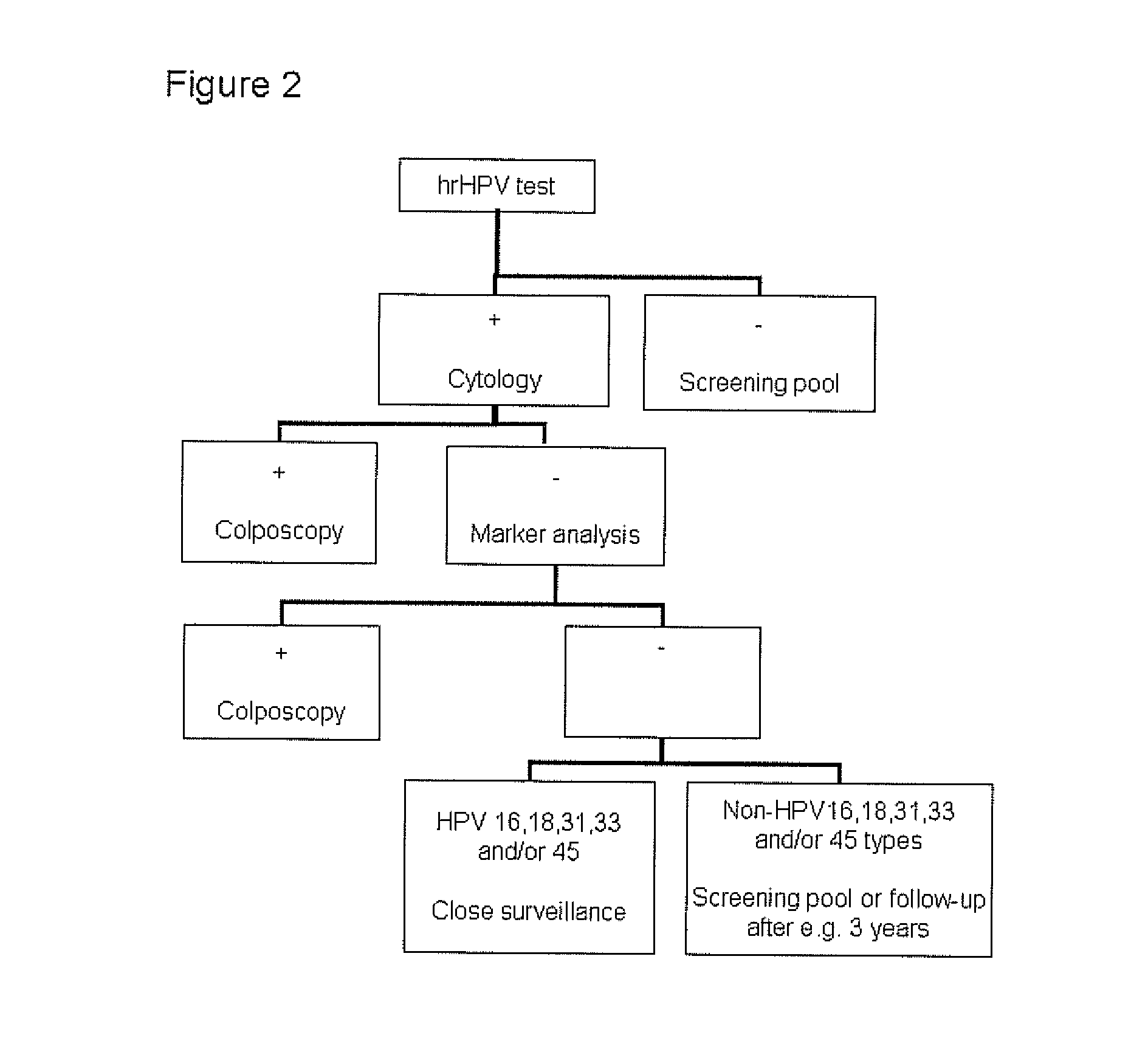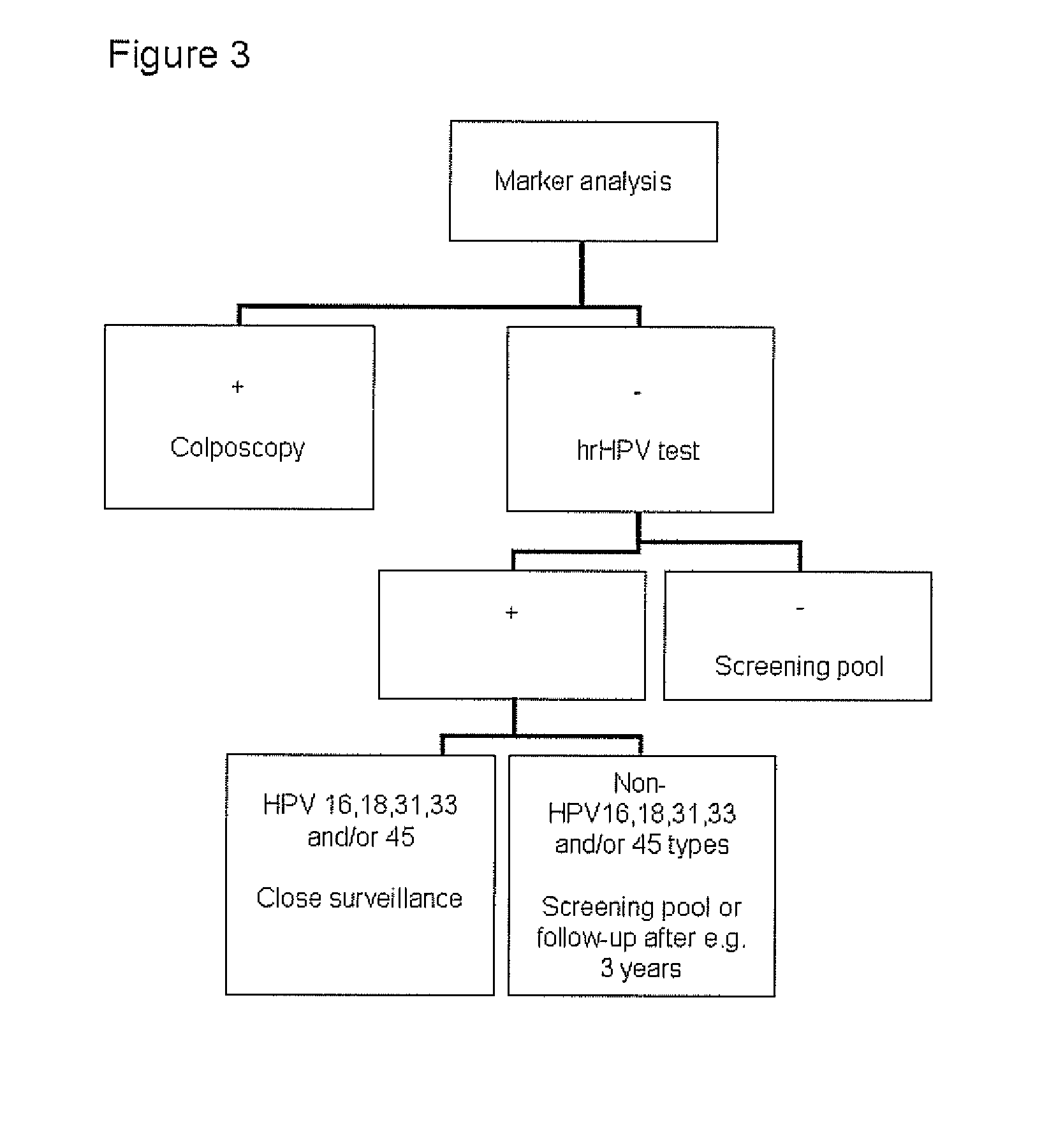Cervical screening algorithms
- Summary
- Abstract
- Description
- Claims
- Application Information
AI Technical Summary
Benefits of technology
Problems solved by technology
Method used
Image
Examples
examples
1. HPV Testing
[0064]We initiated a prospective, randomized trial to evaluate the effectiveness of hrHPV testing as an adjunct screening tool in a large scale population-based primary screening setting. This POBASCAM (Population based screening Amsterdam) trial compares the yield of ≧CIN 2 / 3 among 44,102 women in a primary screening program by either cytology testing alone (control arm) or cytology and HPV testing (intervention arm), using a GP5+ / 6+PCR enzyme immunoassay. Baseline data have been published (Bulkmans et al., Int J Cancer 2004, 110:94-101) and completion of 5 years follow-up of all women is expected in 2008. Interim analyses revealed that the sensitivity and negative predictive value of HPV testing for ≧CIN 2 / 3 is clearly superior to that of cytology. Data from about 18,000 women who reached already the second screening round (after 5 years) showed that the total number of ≧CIN 2 / 3 lesions in both arms that accumulated till and including the next screening round was alm...
PUM
| Property | Measurement | Unit |
|---|---|---|
| Time | aaaaa | aaaaa |
Abstract
Description
Claims
Application Information
 Login to View More
Login to View More - R&D
- Intellectual Property
- Life Sciences
- Materials
- Tech Scout
- Unparalleled Data Quality
- Higher Quality Content
- 60% Fewer Hallucinations
Browse by: Latest US Patents, China's latest patents, Technical Efficacy Thesaurus, Application Domain, Technology Topic, Popular Technical Reports.
© 2025 PatSnap. All rights reserved.Legal|Privacy policy|Modern Slavery Act Transparency Statement|Sitemap|About US| Contact US: help@patsnap.com



